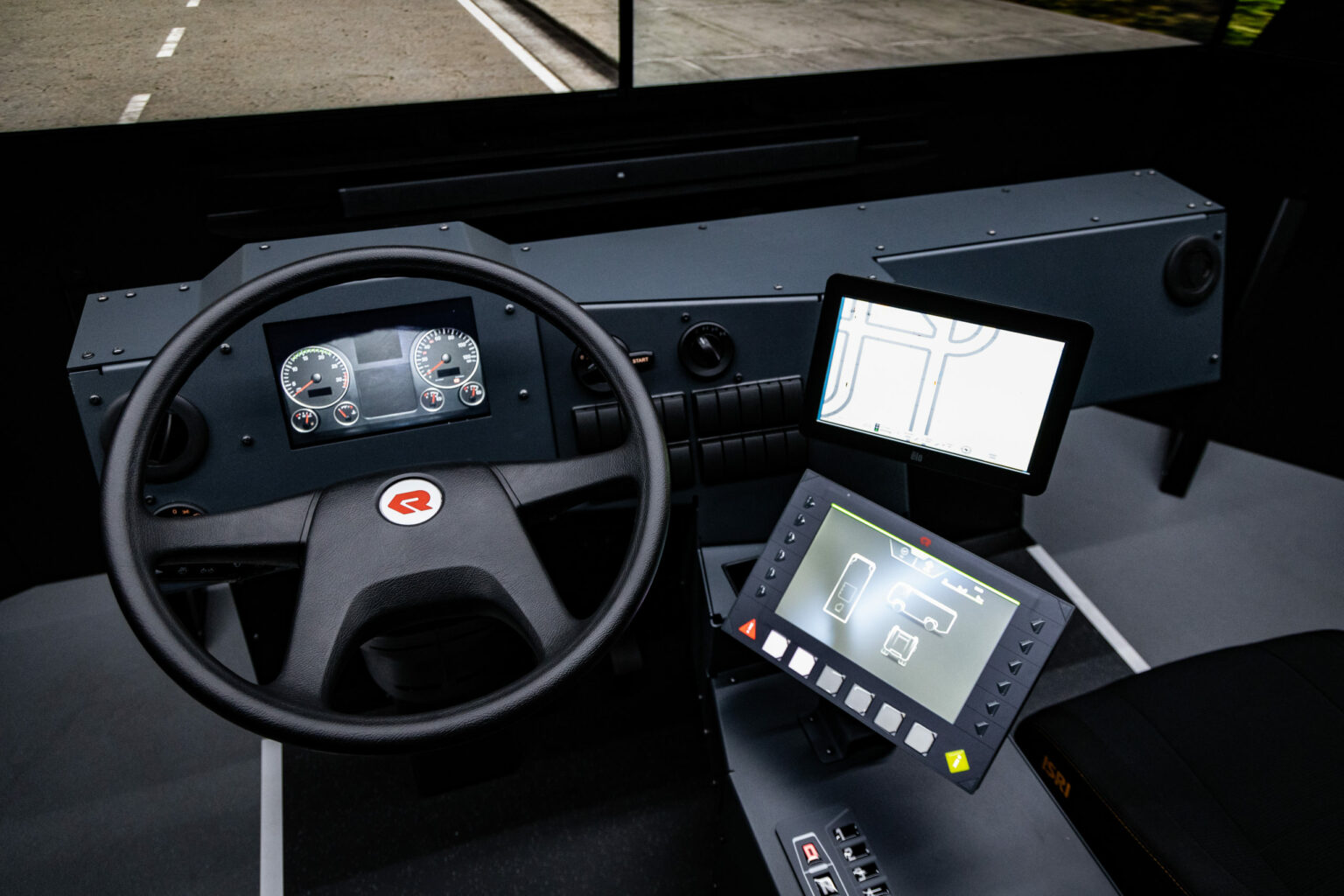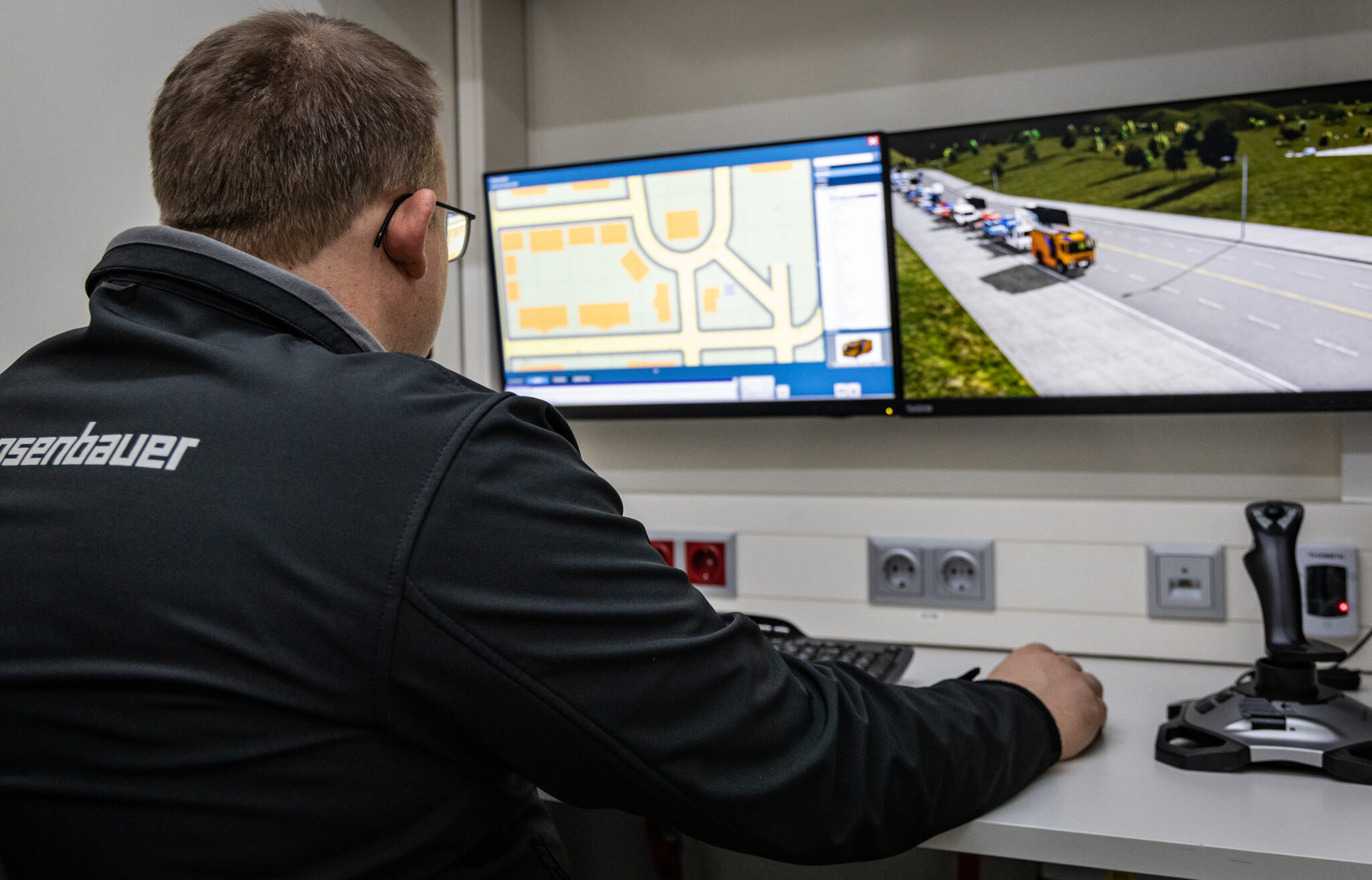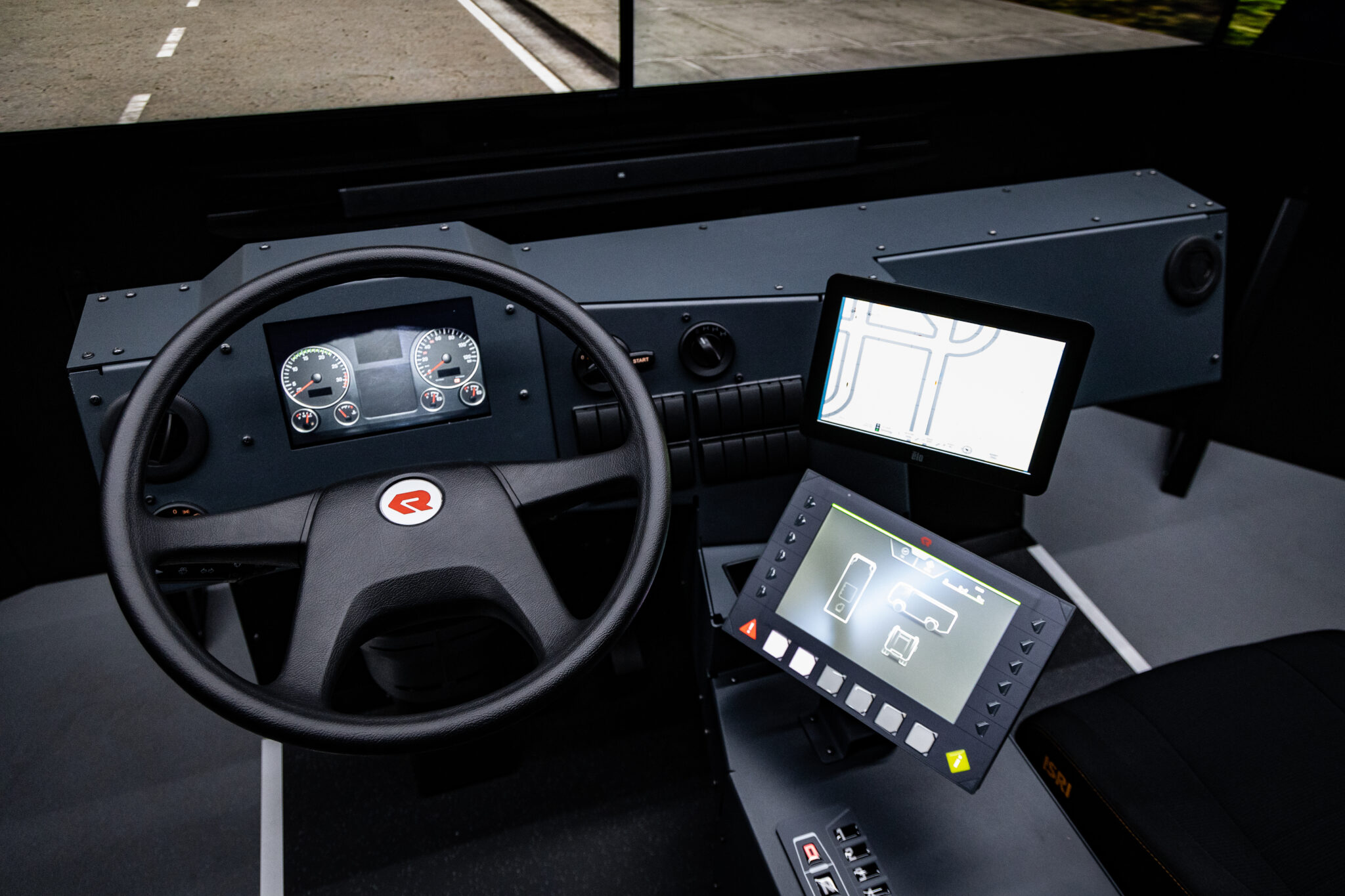Rosenbaeur further develop simulation systems on the RCS Simulator Driving
- December 1, 2020
- 9:35 am


Iain Hoey
Share this content
Rosenbauer has further developed and improved the quality of its simulation systems. Training for municipal fire department emergency journeys is undertaken on the new RCS Simulator Driving, whereby particularly critical driving situations can be practiced without risk.
On the new RCS Simulator Familiarization, airport road users can familiarize themselves with specific locational conditions, and train for the required driving authorizations.
Both systems are based on the technology of the PANTHER Tactical Simulator, which is successfully operated by airport fire departments around the world.
Realistic emergency driving
The new driving simulator offers an even more realistic training experience than its predecessor, thanks to revised software. For example, the environmental surroundings in virtual emergency journeys have been further developed.
Therefore, on the RCS Simulator Driving, driving in an emergency lane or the correct behaviour in a traffic jam or on a construction site can be practiced.

Road layouts (single- or multi-lane, intersections, roundabouts, bottlenecks, bridges, tunnels, motorway entrances and exits, level crossings, etc.), traffic and light signals, as well as various weather and road conditions (rain-soaked roads, black ice, obstructed visibility due to fog or snowdrifts, night-time operations, etc.) can be adjusted at will. #
Sudden dangers can also be programmed into the training, for example a pedestrian who does not notice the alarm and steps into the road, or a car that turns or veers into another lane.
In addition, by adjusting the vehicle weight, the driving dynamics of the emergency vehicle can be fine-tuned and the training can be arranged for different vehicle types and loads (e.g. full tanks on the outward journey, empty on the return journey).
Safe driving at the airport
The RCS Simulator Familiarization is not used by fire departments but by the drivers of vehicles at airports, to train on how to drive in airport traffic, with its many special regulations, safety rules and particular traffic rules, and how to conform to and obey these.

For this purpose, the simulator simulates the entire, non-public transport network with apron, runway and feeder roads, as well as ground traffic, including aircraft and vehicles (follow-me and tank vehicles, catering and de-icing vehicles, passenger buses, baggage transporters etc.).
It can be used by airport operators both for the training and qualification of personnel (keyword: apron driver’s license), and can be adapted precisely to the conditions of a particular airport.
As with the RCS Simulator Driving, training is undertaken in a generic cockpit, which offers the same range of functions as a classic truck and uses the controls of the PANTHER Tactical Simulator (steering wheel and accelerator/brake pedals with force simulation, manual transmission, dashboard etc.). An original cockpit can also be included as an option.
Container and classroom variants
The two new simulators are available in a classroom version as well as one installed in a container. In the classroom version, the “view from the cockpit” is via 4K monitors, while in the container solution, it is via a video wall with a 180° field of view.
Both the truck training cab and the trainer’s control room are permanently installed in the container. It can be permanently mounted on a vehicle trailer or designed with a lifting hook to be placed on a flatbed for transportation.
Both new simulators can be used to train any traffic scenario in the respective environment, municipal emergency journeys in urban and rural areas, and driving in the restricted areas of airports.
The great advantage of this is that not only can routine driving be carried out realistically, but unusual scenarios and traffic situations can also be practiced without danger. In addition, training exercises can be repeated as often as desired, save resources and the environment, and are incomparably less expensive than training by means of real driving.



